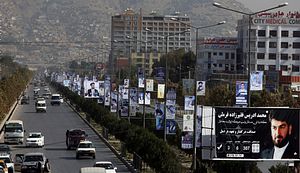Afghans are scheduled to head to the polls on October 20 to cast ballots in elections for the lower house of parliament and district councils. The election, originally slated for 2015, is more than three years late, and with less than a month to go, it is beset with crises big and small.
Not one to shy away from eating my own words, I did not think Afghanistan would manage to hold elections this year. Last December, when Afghanistan’s Independent Election Commission (IEC) announced that parliamentary and district council elections on July 7, 2018, I concluded by writing “It would seem impossible for Afghanistan to manage an election as soon as next summer, but further delay pushes the image of even a nascent democracy in the country into the realm of true absurdity.”
Ali Yawar Adili, who has been following the details of the election reform process for the Afghanistan Analysts Network, identified “multiple, serious problems” emerging ahead of the election in an article in early August, having to do with “among other things, insecurity, voter registration, controversies over the two institutions charged with overseeing the vote and… a call by some major political parties to change the election system.”
While campaigns are now underway and Kabul appears intent on seeing the election through, we can’t count the votes before they’re cast. Those “multiple, serious problems” loom large.
Security is a critical issue. The most recent Special Inspector General for Afghanistan Reconstruction (SIGAR) quarterly report (from July) cited NATO’s Resolute Support as tallying 56.3 percent of Afghanistan’s districts as under government control or influence. A full 30 percent of districts, the report stated, were contested territory, meaning they were “controlled by neither the Afghan government nor the insurgency” as of May 15, 2018. In the months since, the war has raged on. In July, Taliban overran two districts in eastern Afghanistan and in August, Afghanistan’s 12th largest city — Ghazni — was the site of heavy fighting. The government regained control, but at a heavy cost.
On October 20, Afghan voters will be able to cast ballots at more than 21,000 polling stations across the country — except in Ghazni (which reportedly won’t be having polls at all). According to news reports, “54,000 members of Afghanistan’s security forces will be responsible for protecting polling centers on election day.”
Election-day violence isn’t the only security threat. As campaigning kicked off September 28, the spokesman for the country’s Independent Election Commission, Aziz Ibrahimi, said five candidates had been killed in separate attacks: two in Kabul, and one each in eastern Nangarhar, southern Kandahar, and northern Parwan province.
Beyond physical security are questions about the technical security — and transparency — of the election, which will be conducted using a new biometrics system. Reports on Friday noted that of the 22,000 sets of biometric identification systems Afghanistan expects to deploy for the election, only 4,400 have been delivered to the country. While authorities rushing to train poll workers on the machines, the damage may have already been done during the registration process. While Afghanistan has not had a proper census since the 1970s, registration rates compared to estimates of eligible voters yielded significant under-registration in some provinces and suspiciously high rates — like Paktia, where 165 percent of the estimate eligible male voting population registered. If the voter lists are bad now, argued Scott Worden, director of Afghanistan and Central Asia Programs at the U.S. Institute of Peace (USIP), in a late-August article for the Afghanistan Analysts Network, the bigger consequence is six months down the line when Afghanistan is supposed to hold its next presidential election.
In many ways, the parliamentary elections this month are a test run for the presidential elections planned for April 20, 2019.

































